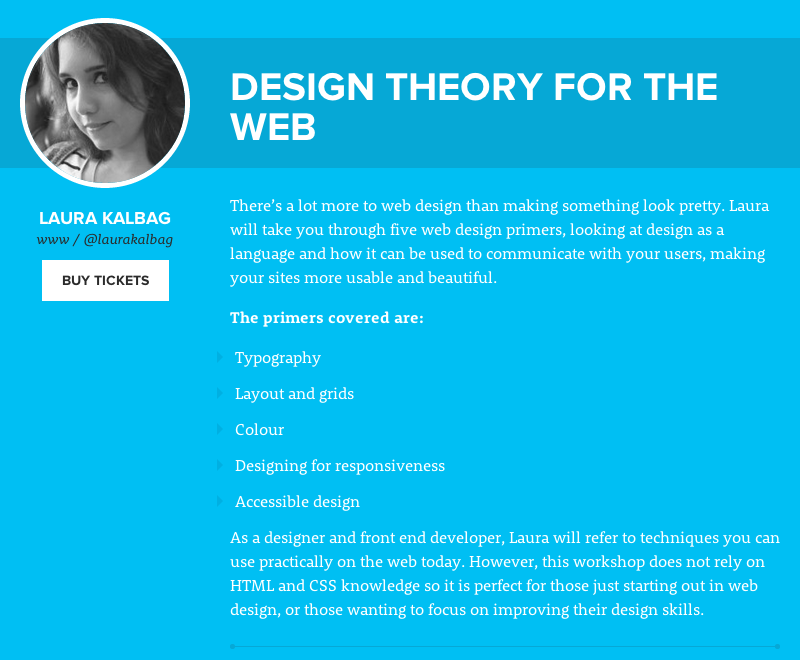Design theory for the web workshop at Interlink conference
Sadly, Interlink conference has been cancelled. I’m gutted that I won’t be visiting Canada this year, but I totally understand how difficult it is to run a conference, especially if you’re trying to put on the best possible event for your attendees and speakers.
I’m running my [‘Design theory for the web’ workshop at Interlink conference](http://interlinkconference.com/workshops/#design-theory-web) in Canada on the 18th of June.

It’s a one day workshop and I’ve written a mega description below for anyone wanting to know more:
There’s a lot more to web design than making something look pretty. I’ll take you through five web design primers, looking at visual design language and how it can be used to communicate with your users, making your sites more usable and beautiful.
The primers covered are:
- Typography
- Layout and grids
- Colour
- Designing for responsiveness
- Accessible design
As I’m a designer and front end developer, I’ll refer to techniques you can use practically on the web today. However, this workshop does not rely on HTML and CSS knowledge so it is perfect for those just starting out in web design, or those wanting to focus on improving their visual design skills.
Looking at the hands-on application of design skills, I’ll walk you through the visual design of two website projects. One project will be used to learn the techniques, and one project will be used to apply what we have learned together.
Typography
What do we aim to achieve with typography? What makes a good typeface and what makes it suited to a particular project? Text is the foundation of the web and learning typographic principles will help you make your text easier to read, understand and reinforce your brand.
Layout and grids
Why should we use grids? How do we create layouts that work with varied content? Layout design is what makes for sophisticated visual design. Learning about layout and grids will make your site easier to navigate, helping your users find the information they need.
Colour
Are there any ‘best colours’ for website design? How do we create good colour palettes? Many designers are scared to use colour in their designs. Learning about colour will help you highlight key areas of your site and make your brand stand out.
Designing for responsiveness
How can design principles help us design for the responsive web? What are the pitfalls of responsive web design? Responsive web design makes designing for the web more challenging. Learning about useful working processes and the common pitfalls of responsive design will help you make your site more future friendly.
Accessible design
What makes design accessible? What can we do to make our sites better for a wider audience? Accessibility isn’t just about disabilities. Learning about how important design is to accessibility will make your site a better experience for as many users as possible.